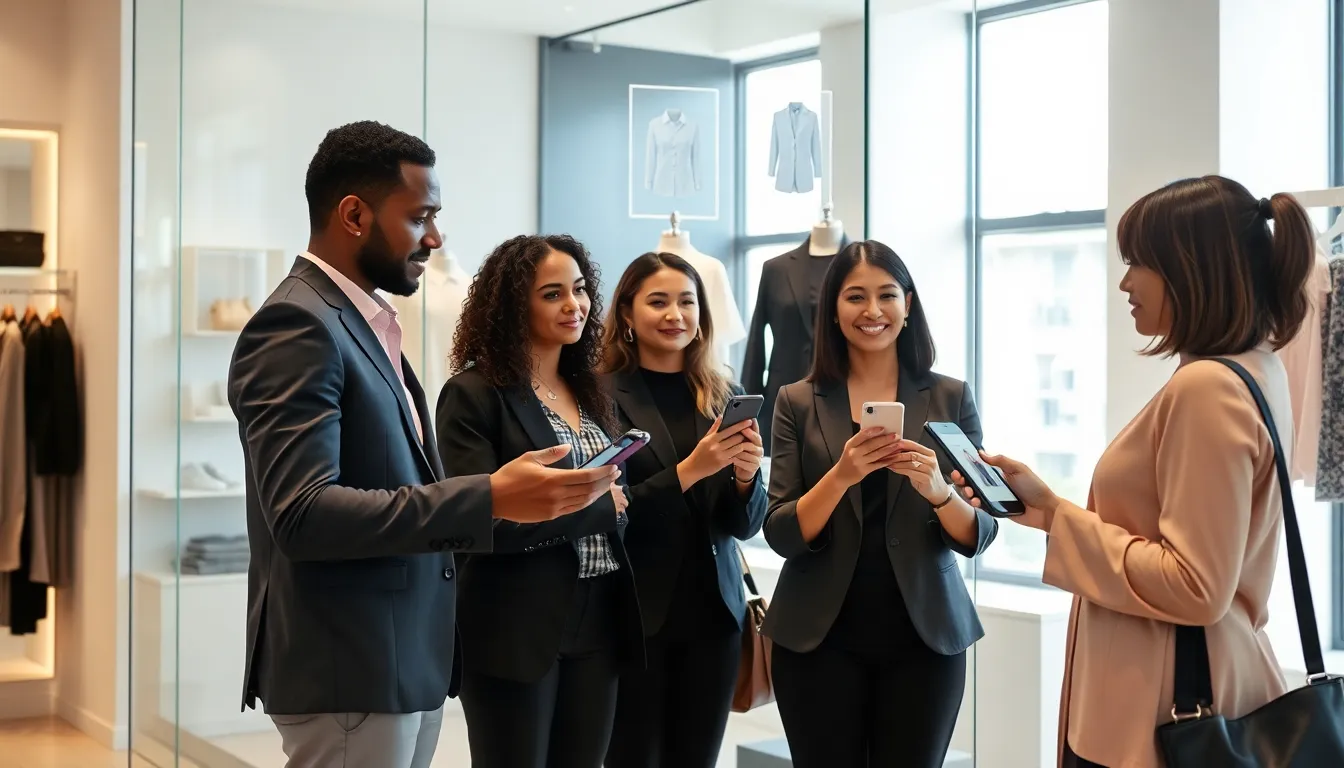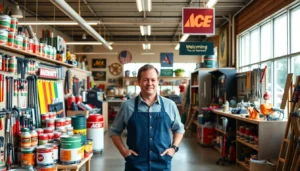Imagine shopping without pesky dressing room lines, endless sizes, and roaming store aisles. With augmented reality (AR), that dream is becoming a reality. No need to squint at your reflection in a phone screen when you can practically try on the latest styles from the comfort of your couch. In this text, we’ll investigate into how augmented reality is strutting its stuff in the fashion world, blending innovation and style seamlessly. Get ready for a stylish ride.
Table of Contents
ToggleUnderstanding Augmented Reality

Augmented reality fuses the real world with computer-generated elements, providing an interactive experience that enhances the way people perceive their surroundings. In simpler terms, it adds a layer of digital magic over the physical world we live in. Whether it’s through smartphone apps or specialized devices, AR ushers in a new era of engagement. To visualize it, consider pointing your phone at a piece of furniture in your living room and instantly seeing how that new couch would look. Now, apply that technology to fashion, and you have a fantastic new shopping experience.
This cutting-edge tech doesn’t just stop at recreating what’s already there. It emphasizes blending the virtual and real, creating immersive experiences that can literally change how one interacts with products.
The Intersection of Fashion and Technology
Gone are the days when fashion was dictated solely by runways and print ads. As technology skyrockets, fashion designers now embrace digital tools, and what better ally than augmented reality? This technology offers a way to connect with consumers beyond traditional marketing. From interactive advertising to unique user experiences, the combination of fashion and AR is reshaping consumer behavior. You can see top brands collaborate with tech companies, creating unique virtual experiences that engage shoppers in unprecedented ways. For example, some apps allow users to scan clothing tags and unlock special content, from styling tips to runway shows.
The use of AR in fashion is not limited to big brands either. Independent designers and startups harness this power to bring art and technology together, leveraging AR to carve out their niche. This tech-driven approach has opened a new avenue for creativity.
Benefits of Augmented Reality in Fashion
Implementing augmented reality in fashion comes with a treasure chest of benefits:
- Try Before You Buy: Shoppers can visualize how clothes fit and look before making a purchase, drastically reducing return rates.
- Enhanced Personalization: AR can recommend styles based on user preferences, making shopping more enjoyable and tailored.
- Interactive Marketing: Brands can create compelling campaigns that engage users through games, filters, and unique content on social media.
- Cost Efficiency: Virtual fittings can reduce the need for physical samples, minimizing costs and waste associated with production.
- Increased Engagement: Interactive experiences keep consumers on brands’ platforms longer, vastly improving brand loyalty.
Case Studies of AR in Fashion
Several brands have boldly stepped into the world of augmented reality, showcasing how effective this technology can be:
- IKEA: Although primarily a furniture brand, IKEA’s AR app allows users to visualize furniture in their homes, setting a precedent for how other retailers might use AR to revolutionize shopping.
- Zara: The brand introduced an AR feature allowing customers to see models wearing new clothing lines when they pointed their phone at store windows.
- L’Oreal: Their AR app allows customers to try on makeup virtually, enhancing the shopping experience and reducing the chance of buyer’s remorse.
- Nike: The sportswear giant developed an AR shopping experience that helps customers select sizes and visualize products in motion.
These examples illustrate that the magic of augmented reality isn’t limited to just trying on clothes: it’s about enhancing the overall shopping experience.
Future Trends of Augmented Reality in Fashion
As AR technology continues to evolve, several trends are set to dominate the fashion industry:
- Integration with the Metaverse: As virtual reality gains traction, integrating AR into virtual environments can offer shoppers entirely new experiences. Imagine attending a virtual fashion show and purchasing items from your seat.
- Sustainability Efforts: AR can help promote sustainable fashion by allowing customers to visualize how garments are made, showcasing eco-friendly practices.
- Wearable Technology: Think smart fabrics combined with AR. Future possibilities may include real-time wardrobe adjustments or digital patterns that change at the user’s whim.
- Enhanced Retail Experiences: Retail spaces may transform into AR playgrounds, offering immersive experiences that attract customers and encourage purchases through interaction.
Challenges and Limitations
Even though its potential, AR in fashion isn’t without hurdles. Common challenges include:
- Technology Barriers: High adoption costs for technologies can deter smaller brands from implementing AR solutions.
- User Acceptance: Not all consumers are comfortable using AR, and education around the technology’s benefits is essential.
- Data Privacy Concerns: Collecting data for personalized AR experiences raises privacy issues that brands must address transparently.
- Quality and Consistency: Poor quality AR experiences can branding damage, making it crucial for designers to develop consistent, high-quality solutions.
These challenges may seem daunting, but the potential rewards and innovative solutions make the journey worthwhile.


